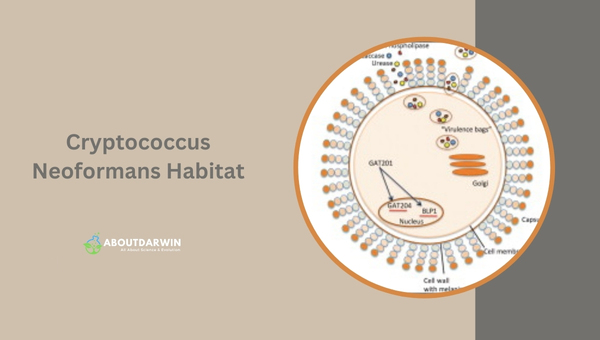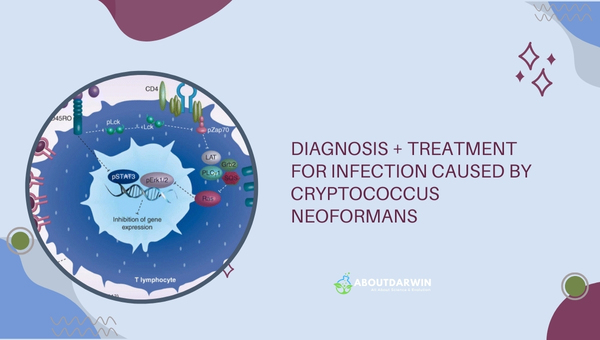Physical Address
304 North Cardinal St.
Dorchester Center, MA 02124
Are you curious about microbiology or simply eager to expand your knowledge of infectious diseases? Then, delve into the intriguing world of Cryptococcal fungi! This article promises a comprehensive insight into Cryptococcus Neoformans – its natural habitats, biological properties, and disease mechanism.
This enriching read not only caters to students and professionals in the field but also to anyone interested in understanding these microscopic organisms that pose notable health risks.
Cryptococcus Neoformans is a yeast-like fungus often found in bird excrement—specifically, pigeons—and decaying wood.
It can result in potentially harmful infections, especially among those with compromised immunity, such as HIV/AIDS patients. Our knowledge of this fungus’s precise habitat assists us in awareness and prevention efforts—after all, being forewarned is being forearmed!
Contents
Cryptococcus Neoformans, a type of pathogenic yeast, has a variety of habitats. Understanding these natural environments is vital in analyzing how the microbe interacts with other organisms and its potential impact on human health.

Let’s delve further into the typical habitats and microbial interactions associated with this fungus.
Cryptococcus Neoformans thrives in multiple types of environments:
An environment rich in nitrogen (primarily pigeon droppings), provides an excellent breeding ground for Cryptococcus neoformans. The fungi can use the abundant nitrogen sources to grow, multiply, and eventually form airborne spores that can be easily spread.
Bark dust or wood-decomposing substrates are also known to host this fungus; it derive nutrients directly from decomposing organic matter.
Recent studies indicate its presence on fruit skins, too, specifically those located in endemic regions.
Understanding these habitats is crucial for public health as it could aid strategies aimed at reducing human exposure to this pathogen.
To comprehend the epidemiology and New Ice-olation pathways of Cryptococcus neoformans better, we need to explore its interactions with other microbes:
An in-depth understanding of these microbial relations is presumed to provide better insights into resisting the organism’s spread and devising therapeutics against infections caused by this yeast.
Also Read: Unlock Your Roots: Explore Free Genealogy Websites Today
Understanding the morphology of Cryptococcus Neoformans entails the comprehension of its biological characteristics and the way it forms spores. This is crucial as it highlights how this fungus thrives, infects, and spreads in an environment.
Cryptococcus Neoformans exemplify distinctive biological features that enable their survival and pathogenicity in host organisms. To elucidate:
The spore formation process greatly contributes to the life-cycle progression, survival, spread, and pathogenicity of Cryptococcus Neoformans:
Thus, Biological Characteristics and Spore Formation collectively narrate a comprehensive morphology of Cryptococcus Neoformans, laying the platform for our understanding of its epidemiology and consequent infections.
Also Read: Unraveling Staphylococcus epidermidis: Biochemical Tests & ID
The yeast-like fungus Cryptococcus neoformans has gained notorious recognition in the field of global health due to its extensive prevalence and serious implications on human health.
The epidemiology of this fungal species involves an understanding of its geographic prevalence and the main modes of transmission.
Cryptococcus neoformans is not confined to a specific region; instead, it is found worldwide due to its affinity for certain environmental conditions, such as bird droppings, especially those of pigeons, and soil contaminated with decaying wood. It’s worth noting that:
The transmission pathway followed by Cryptococcus neoformans primarily involves inhalation into the human body. To understand it thoroughly:
Also Read: Unlock DNA Discoveries: Free DNA Upload Websites Guide
When discussing Cryptococcus Neoformans, the impact and importance of its virulence factors come to our mind. These factors are unique components of this particular fungus that aid in not just entering a host organism but also surviving and flourishing within it.
Among these contributing factors, two prominent ones are the Polysaccharide Capsule and various elements that influence disease progression.
One of the defining features that separate Cryptococcus Neoformans from other fungal pathogens is its polysaccharide capsule. This component:
Here’s a more detailed look at how this feature facilitates fungal survival and infection:
The rate at which an infection progresses depends on several influencing elements, such as:
How quickly infection progresses often correlates directly with an individual’s overall immunity level. Lower resistance due to conditions like HIV/AIDS makes one more susceptible.
Usually, diseases caused by Cryptococcus occur after heavy exposure to environmental sources proliferating with yeasts.
Diseases such as organ failure, malignancies, or diabetes can also exacerbate the progression.
Older adults usually deal with more severe symptoms and a quicker progression than younger individuals.
When it comes to Cryptococcus Neoformans, understanding these virulence factors is indispensable. Knowing how this microbe thrives in host bodies and influences disease progress would inevitably aid in designing better diagnostic techniques and treatments.
Also Read: Isostatic Rebound: Uncovering Post-glacial Rebound Process
Identifying and treating Cryptococcus neoformans infections is immensely important for reducing morbidity and mortality rates associated with this pathogen.

The diagnosis usually involves laboratory testing to isolate the fungus from body fluids or tissues, while the treatment typically comprises antifungal medications.
The first step in diagnosing a Cryptococcus neoformans infection is recognizing the relevant clinical signs and symptoms, which can vary significantly based on the individual’s immune status and site of disease. The following are some common diagnostic methods:
This test detects capsular polysaccharide antigens in serum, plasma, cerebrospinal fluid (CSF), urine, or bronchoalveolar lavage specimens. Its high sensitivity and specificity make it a valuable tool for initial screening.
On direct microscopic examination of CSF or tissue samples stained with India ink, the fungus appears as spherical yeast encased in a distinct capsule.
Isolation of C. neoformans from culture remains the gold standard diagnostic method. It grows readily on traditional mycological media.
These methodologies provide confirmatory evidence that can guide further decision-making concerning patient management.
Managing infections caused by Cryptococcus neoformans typically involves antifungal therapy, which is tailored according to factors such as site and severity of infection and patient’s immunocompromised status, among others. Here are some common therapeutic strategies used:
Patients and healthcare professionals alike must remember that this is a general approach, which may need adjustments based on individual patient characteristics. As always, it’s important to keep in constant dialogue with healthcare providers for an optimal outcome.
Diagnosing Cryptococcus neoformans infections involves laboratory testing, while treatment utilizes primarily antifungal medications administered in a systematic phase-wise manner.
Also Read: Understanding Your Brother’s Wife Role
Cryptococcus Neoformans primarily causes cryptococcal meningitis, a potentially fatal fungal brain infection. It can also cause infections in the lungs and skin.
While it primarily affects those with weakened immune systems—like people with HIV/AIDS—healthy individuals can also contract infections, although this is relatively rare.
Currently, there’s no available vaccine against Cryptococcus Neoformans. Prevention strategies usually involve avoiding environments that may contain bird droppings or decaying wood.
Birds are typically associated with the spread of this fungus, but household pets do not usually carry it like dogs and cats. However, since the fungus lives in environmental sources like soil and bird droppings, pets could potentially come into contact with it outdoors.
Also Read: GenomicsEducation Merger: Now Part of GenealogyExplained
Cryptococcus neoformans is a fascinating fungus found in various regions worldwide and predominantly in bird droppings and decaying wood. The unique biological characteristics of this fungus and the spore formation process it undergoes are complex but crucial for its survival.
In terms of epidemiology, this fungus has diverse modes of transmission, which contributes to its widespread distribution globally. Moreover, virulence factors like the polysaccharide capsule play a crucial role in facilitating fungal survival and infection.
Diagnosis methodologies range from conventional to modern techniques, while treatment usually involves prescribed anti-fungal medications. Public awareness about common symptoms, potential prevention methods, and places where these fungi could be found is vital.